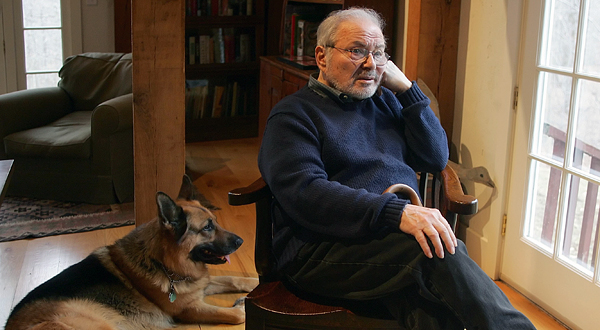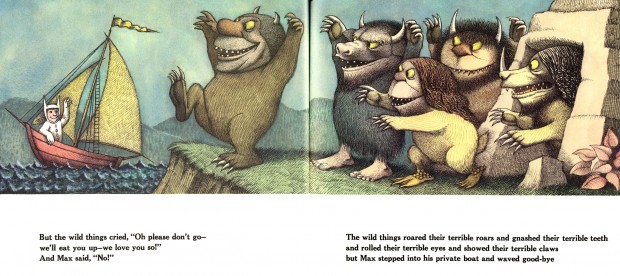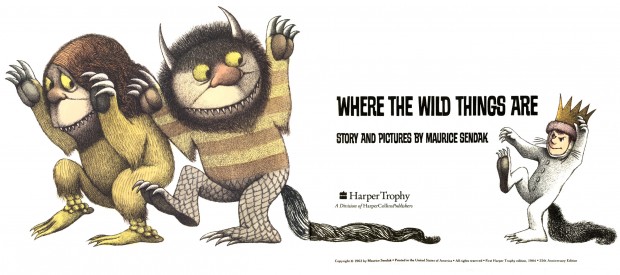An iconographic and text archive related to communication, technology and art.
☛ Where the Wild Things Are by Maurice Sendak, Harper Trophy edition [1963]1984, 25th Anniversary Edition, copyright page. © Maurice Sendak.
From The New York Times:
Maurice Sendak, widely considered the most important children’s book artist of the 20th century, who wrenched the picture book out of the safe, sanitized world of the nursery and plunged it into the dark, terrifying and hauntingly beautiful recesses of the human psyche, died on Tuesday in Danbury, Conn. He was 83 and lived in Ridgefield, Conn.[…]
Roundly praised, intermittently censored and occasionally eaten, Mr. Sendak’s books were essential ingredients of childhood for the generation born after 1960 or thereabouts, and in turn for their children. He was known in particular for more than a dozen picture books he wrote and illustrated himself, most famously “Where the Wild Things Are,” which was simultaneously genre-breaking and career-making when it was published by Harper & Row in 1963. (“Maurice Sendak, Author of Splendid Nightmares, Dies at 83” by Margalit Fox, May 8, 2012)

Here’s how The New York Times concludes its article on Sendak:
Though he understood children deeply, Mr. Sendak by no means valorized them unconditionally. “Dear Mr. Sun Deck …” he could drone with affected boredom, imitating the semiliterate forced-march school letter-writing projects of which he was the frequent, if dubious, beneficiary.
But he cherished the letters that individual children sent him unbidden, which burst with the sparks that his work had ignited.
“Dear Mr. Sendak,” read one, from an 8-year-old boy. “How much does it cost to get to where the wild things are? If it is not expensive, my sister and I would like to spend the summer there.”

For more about Maurice Sendak see:
- The Kenneth Tyler printmaking collection holds 20 illustrations in various state of completion along with a detailed biography.
- The Rosenbach Museum & Library holds more than 20 items related to or produced by Maurice Sendak (photos, illustrations, written notes).
- In 2005 The Jewish Museum in New York held an exhibition about Maurice Sendak. Six illustrations are still display online.
- By Philippe Theophanidis
- on
- ― Published in Art, Illustration
- Tagged: author, book, children, imagination, Maurice Sendak, monster, obituary, wild

